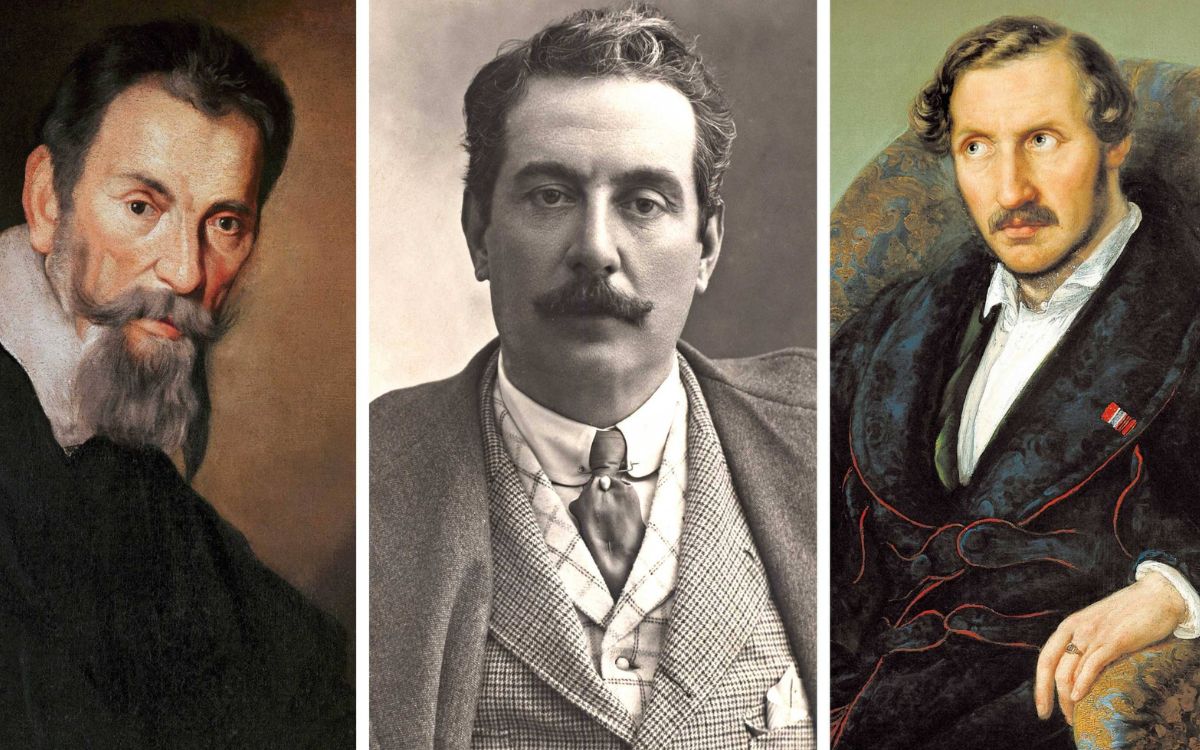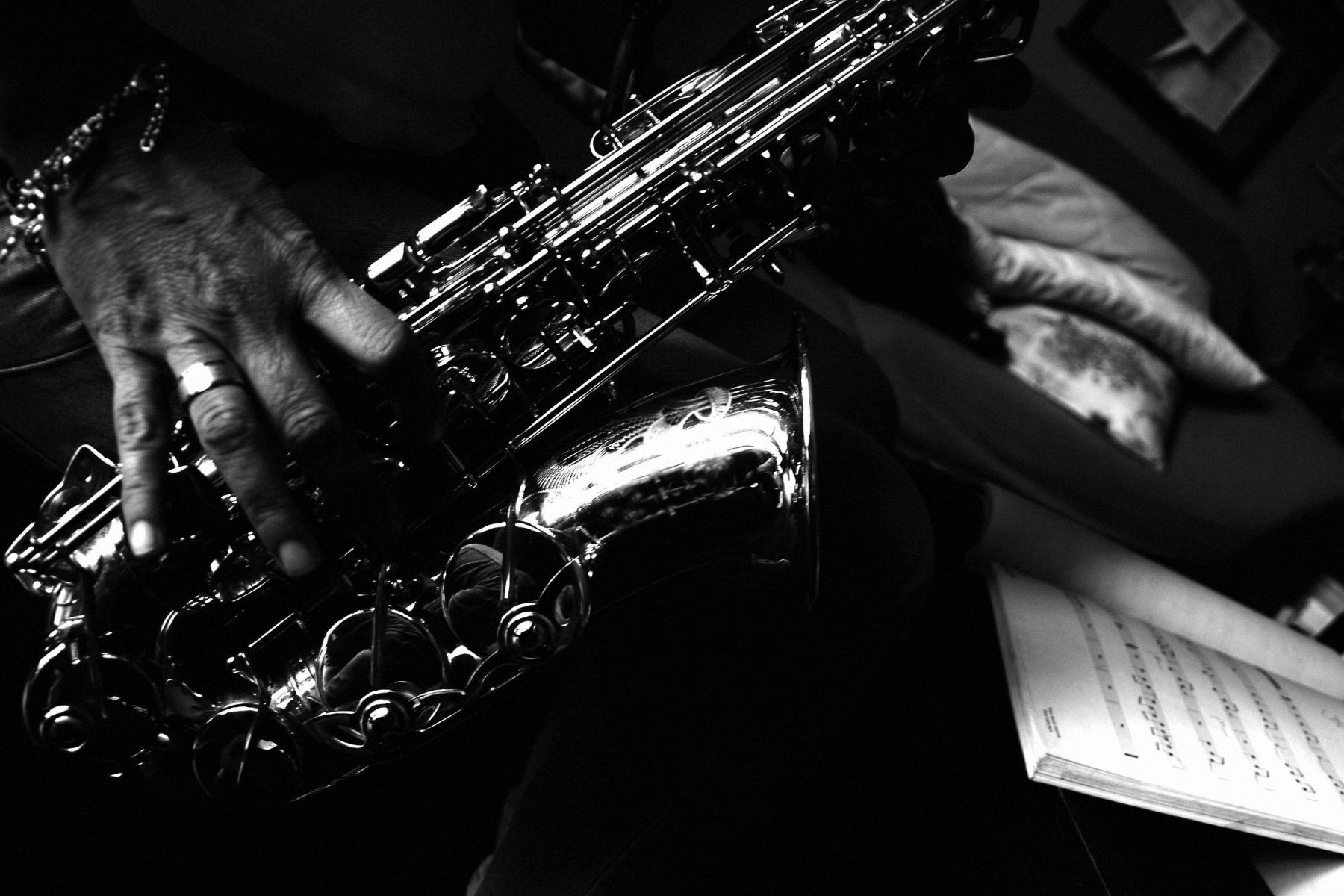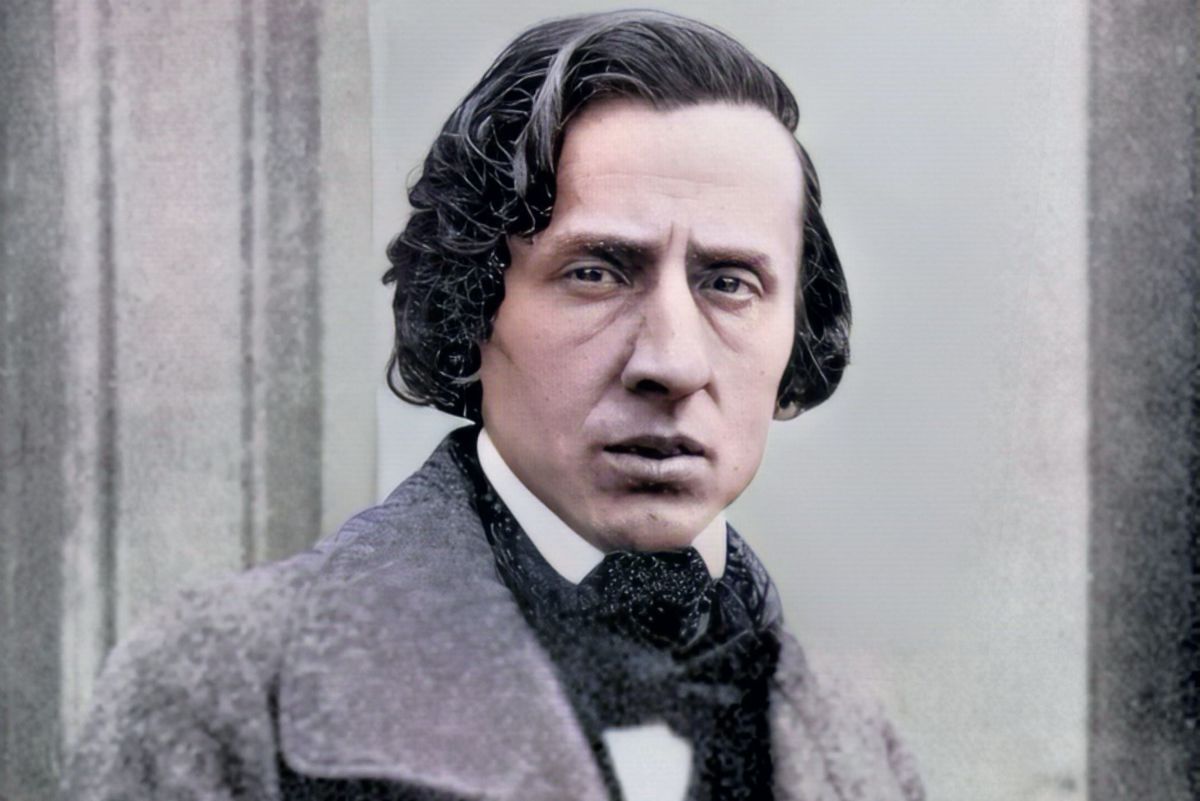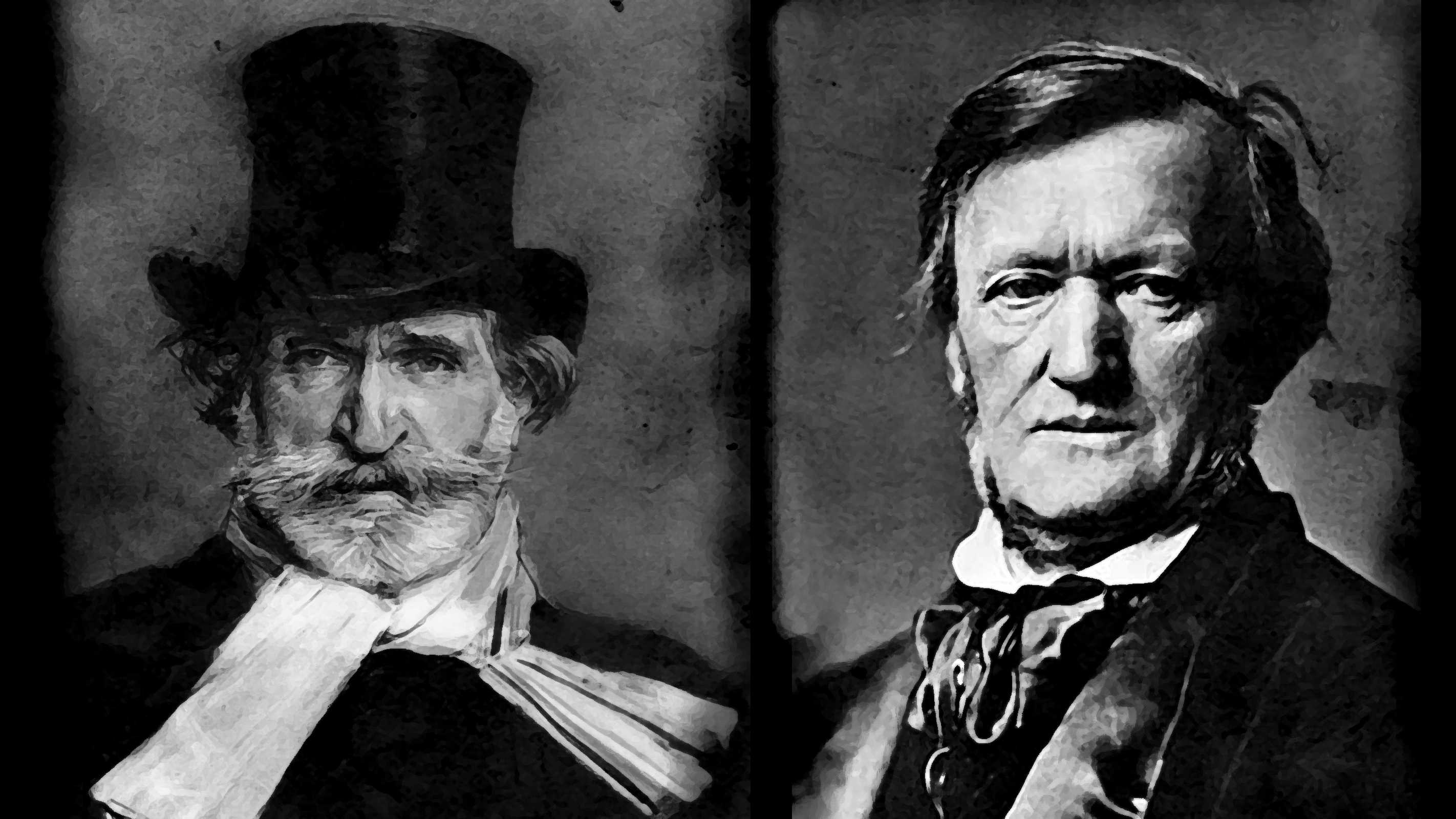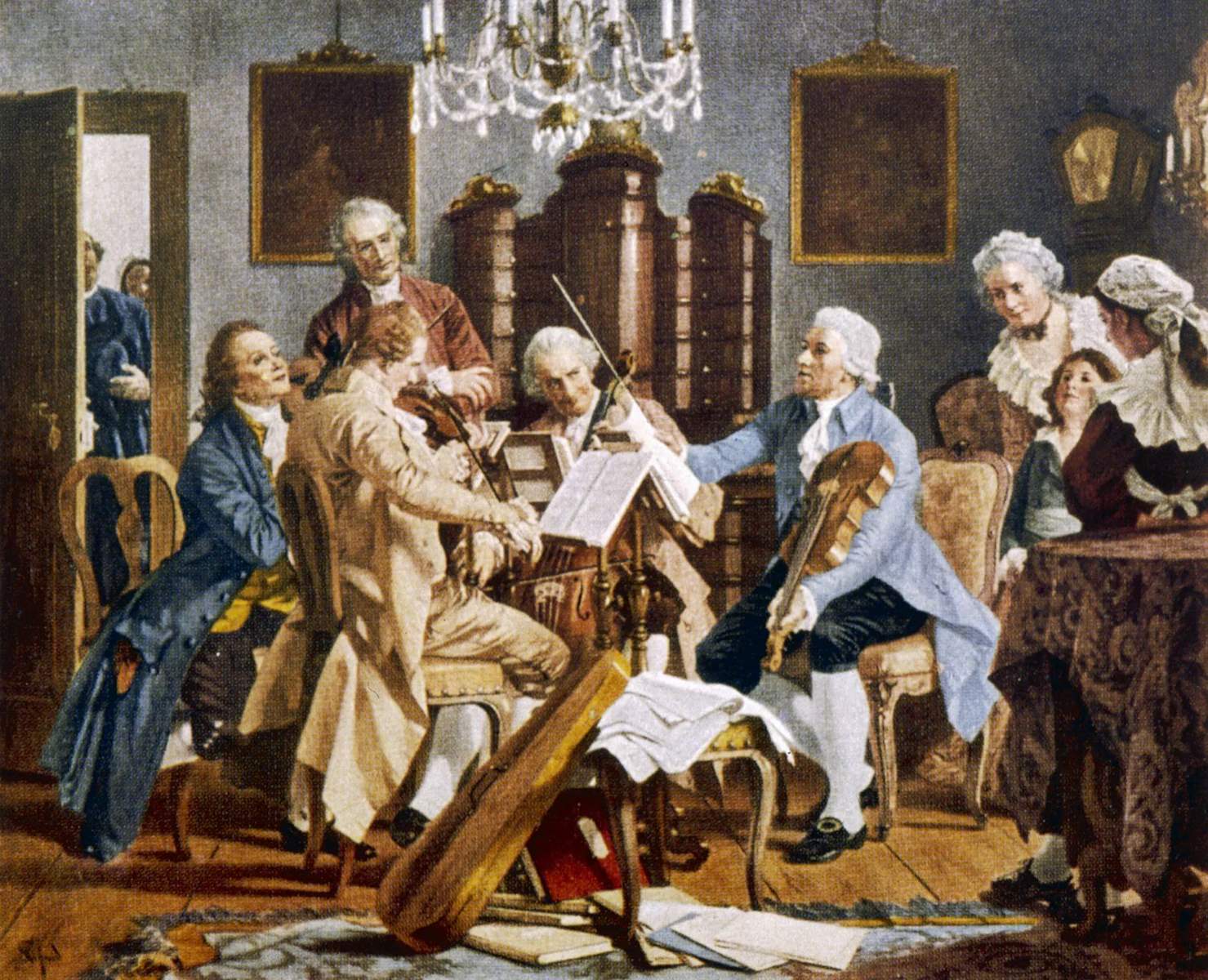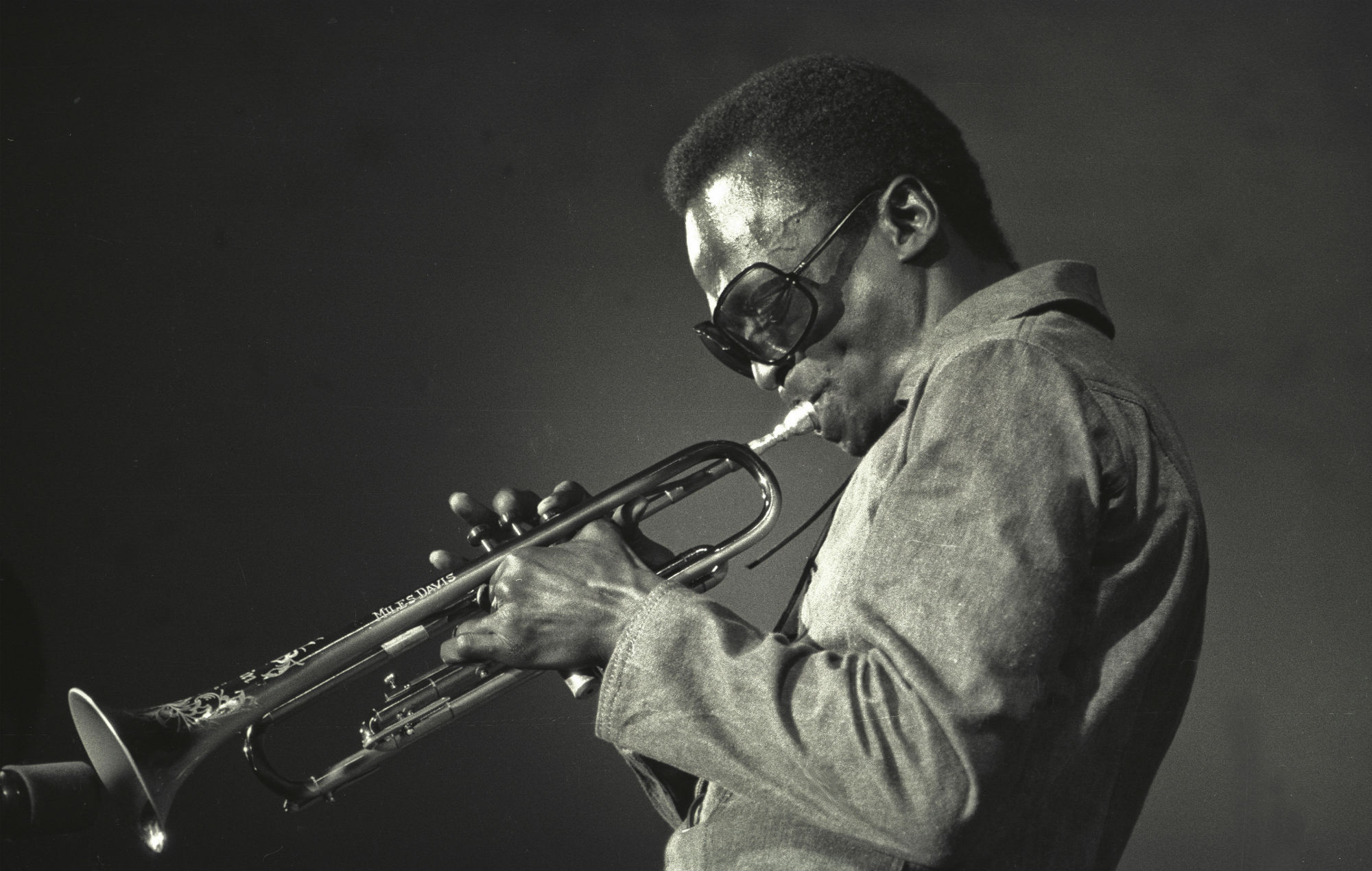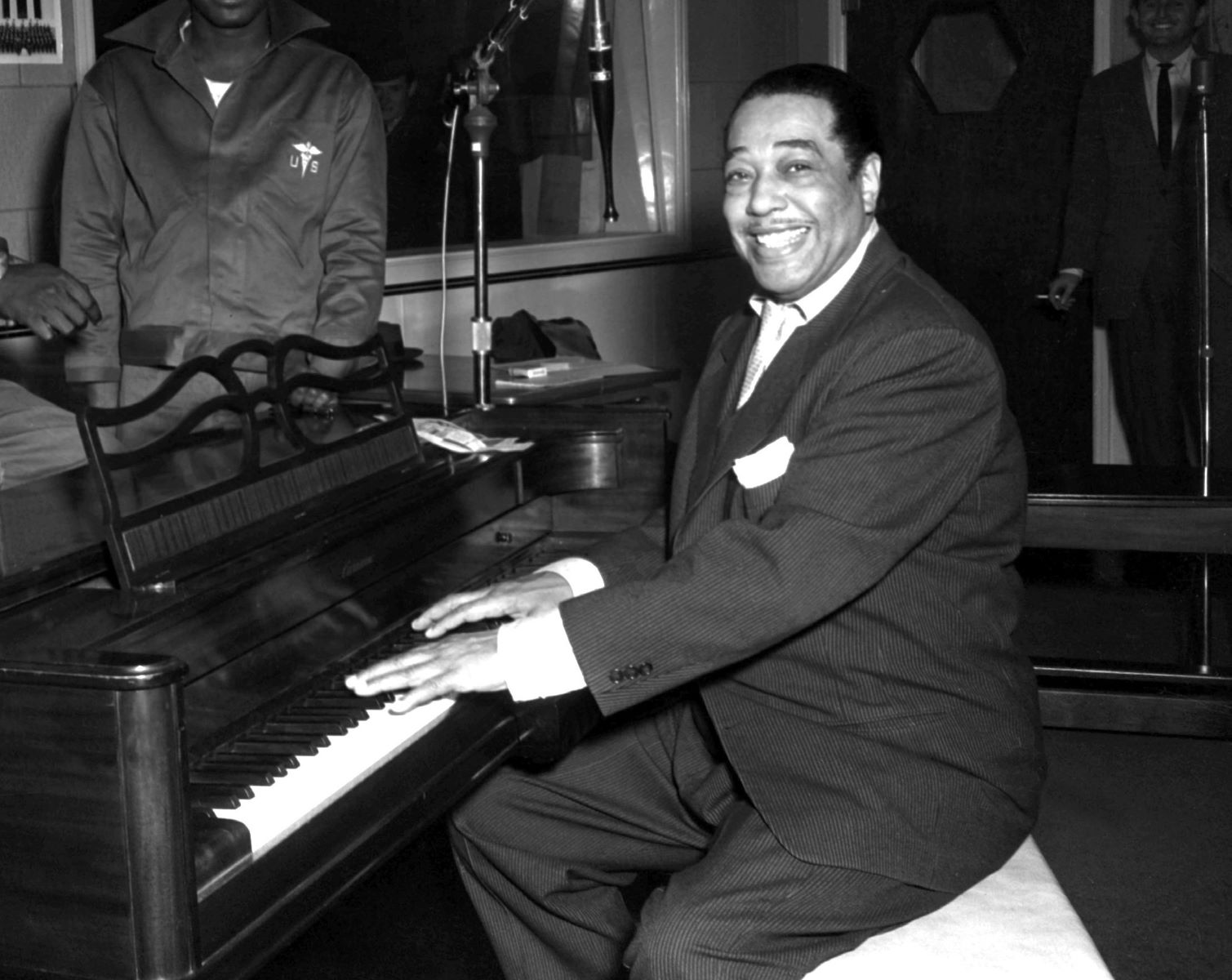Home>Genres>Jazz>Who Is Considered The Most Influential Jazz Composer
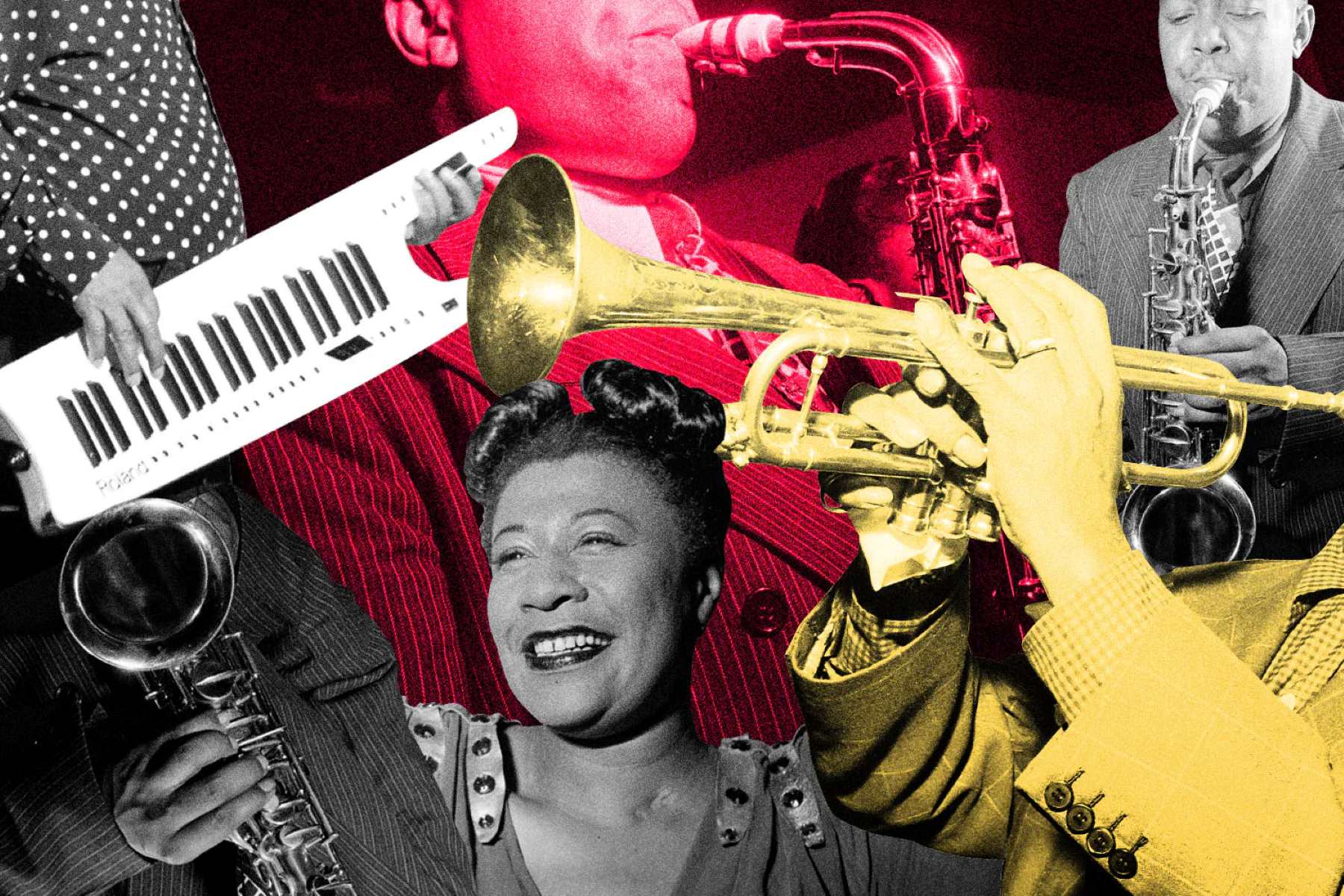

Jazz
Who Is Considered The Most Influential Jazz Composer
Modified: February 24, 2024
Discover the most influential jazz composer in history and their impact on the genre. Explore the masterpieces and innovations that shaped the world of jazz.
(Many of the links in this article redirect to a specific reviewed product. Your purchase of these products through affiliate links helps to generate commission for AudioLover.com, at no extra cost. Learn more)
Table of Contents
Introduction
Jazz, with its rich improvisation and soulful rhythms, has captivated audiences for decades. While the genre is often associated with its talented musicians and iconic performances, it is also defined by its influential composers who have shaped the course of jazz history. These visionary individuals have pushed the boundaries of musical expression, crafting compositions that have become timeless classics and leaving a lasting impact on the genre.
In this article, we will explore some of the most influential jazz composers who have shaped the evolution of this genre. From the early pioneers who laid the foundations to the innovative maestros who pushed the boundaries, each composer has left an indelible mark on the world of jazz.
By delving into the lives and works of these remarkable individuals, we gain a deeper understanding of their contributions and the profound influence they have had on the landscape of jazz composition.
So, join us on this journey as we unravel the stories behind the legendary jazz composers who have defined the genre and continue to inspire generations of musicians and enthusiasts alike.
Early Pioneers of Jazz Composition
In the early days of jazz, there were a few pioneering composers who laid the groundwork for the genre’s growth and evolution. These visionaries took the raw elements of blues, ragtime, and traditional African musical traditions and synthesized them into a distinctly American art form.
One of the most influential early jazz composers was Jelly Roll Morton. Born Ferdinand Joseph Lamothe, Morton was a pianist, bandleader, and composer who is often credited with being the first true jazz composer. His innovative compositions, such as “Black Bottom Stomp” and “King Porter Stomp,” showcased intricate arrangements, syncopated rhythms, and improvisation – all characteristics that would become integral to jazz’s identity.
Another notable figure in early jazz composition was Louis Armstrong. While primarily known for his virtuosic trumpet playing and soulful vocals, Armstrong also made significant contributions as a composer. His compositions, such as “West End Blues” and “Struttin’ with Some Barbecue,” married complex melodies with inventive solo sections, further expanding the possibilities of jazz composition.
Lastly, we cannot overlook the impact of Duke Ellington during this formative period of jazz composition. Ellington, a prolific composer and bandleader, brought a level of sophistication and orchestration to jazz that was unparalleled. His compositions, like “Take the ‘A’ Train” and “Mood Indigo,” showcased his mastery in blending different instrumental textures and creating lush harmonies. Ellington’s ability to elevate jazz into a more formal and compositional realm set the stage for future developments in the genre.
These early pioneers of jazz composition laid down the groundwork for the subsequent generations of jazz composers, establishing the core principles of improvisation, syncopation, and experimentation that continue to define the genre to this day. Their contributions paved the way for the next wave of forward-thinking composers who would take jazz composition to new heights.
Duke Ellington: The Master of Jazz Composition
When it comes to the giants of jazz composition, few names loom larger than that of Edward Kennedy “Duke” Ellington. Widely regarded as one of the greatest jazz composers in history, Ellington’s innovative approach and prolific output have left an indelible mark on the genre.
Born in 1899, Ellington was a multi-talented musician and bandleader. His career spanned over five decades, during which time he composed thousands of pieces, ranging from jazz standards to longer suites and extended compositions.
What set Ellington apart from other composers of his time was his ability to seamlessly blend various musical styles and influences. His compositions were a vibrant tapestry of jazz, blues, classical, and even religious music, creating a unique sound that defied categorization. With his legendary orchestra, the Duke Ellington Orchestra, he brought these compositions to life.
Ellington’s mastery of orchestration was unparalleled. He possessed an uncanny ability to showcase the individual talents of his band members, allowing them to shine as soloists while maintaining a cohesive and tight ensemble sound. His compositions often featured intricate melodies, lush harmonies, and complex arrangements, showcasing his deep understanding of the capabilities of each instrument in his orchestra.
One of Ellington’s most famous compositions is “Take the ‘A’ Train,” a jazz standard that has become synonymous with his name. This upbeat and infectious tune is a testament to Ellington’s ability to create memorable melodies and arrange them in a way that engages both the musicians and the audience.
But Ellington’s contributions to jazz composition extend far beyond a single hit song. He composed numerous suites, such as “Black, Brown and Beige” and “Such Sweet Thunder,” that explored complex themes and narratives through music. These longer-form compositions showcased his ability to tell a story through jazz, elevating the genre to new heights.
Ellington’s influence on jazz cannot be overstated. His innovative approach to composition, his groundbreaking orchestrations, and his commitment to pushing the boundaries of what jazz could be set the stage for future generations of jazz composers. His impact can still be felt today, as his compositions continue to be performed and admired.
Duke Ellington’s legacy as the master of jazz composition is a testament to his brilliance, creativity, and relentless pursuit of musical excellence. His contributions have made an invaluable impact on the genre, solidifying his place in the pantheon of jazz legends.
Charlie Parker: Revolutionizing Jazz Composition
When discussing the evolution of jazz composition, it is impossible to ignore the revolutionary impact of Charlie Parker, also known as “Bird.” With his virtuosic saxophone playing and groundbreaking improvisational style, Parker not only transformed the way jazz was played but also pushed the boundaries of jazz composition.
Emerging in the mid-1940s, Parker was at the forefront of the bebop movement, a subgenre of jazz characterized by fast tempos, complex harmonies, and intricate melodic lines. His compositions, such as “Confirmation” and “Billie’s Bounce,” revolutionized jazz composition by introducing daring melodies and intricate harmonic progressions.
Parker’s approach to composition was rooted in his deep understanding of music theory and his relentless desire to explore new musical ideas. Drawing inspiration from classical composers and merging them with the blues, he created compositions that challenged the norm and demanded a higher level of musicianship from his fellow performers.
One of Parker’s most famous compositions, “Donna Lee,” is a prime example of his innovative and intricate approach to jazz composition. With its rapid tempo and complex chord changes, the composition showcases Parker’s unparalleled technical prowess and his ability to navigate advanced harmonic structures.
Beyond his own compositions, Parker’s improvisational style and melodic innovations deeply influenced the way jazz musicians approached composition. His use of complex bebop lines and his knack for finding unique and unexpected melodic twists inspired countless jazz composers to take their compositions to new heights.
Parker’s impact on jazz composition extended beyond the bebop era. His influence can be heard in countless compositions from subsequent jazz movements, including cool jazz, hard bop, and even contemporary jazz. His legacy as a groundbreaking composer continues to resonate with musicians and audiences to this day.
Charlie Parker’s contributions to jazz composition are immeasurable. His fearless exploration of new musical ideas, his technical mastery, and his ability to push the boundaries of what was possible in jazz composition have left an indelible mark on the genre. He remains a towering figure and a true revolutionary who forever changed the landscape of jazz.
Thelonious Monk: The Maverick of Jazz Composition
When it comes to unconventional and idiosyncratic jazz composition, Thelonious Monk stands in a league of his own. Known for his unique playing style and distinctive compositions, Monk carved a path of innovation and originality in the jazz world that continues to inspire musicians to this day.
Monk’s compositions, such as “Round Midnight” and “Blue Monk,” are characterized by their dissonant harmonies, angular melodies, and unexpected rhythmic patterns. His use of unconventional chord voicings and rhythmic displacement challenged the traditional conventions of jazz composition, making him an outlier in the jazz community.
One of the hallmarks of Monk’s composition style was his ability to create tension and release through his use of space and silence. He would often pause during his compositions, creating moments of anticipation and allowing the music to breathe. This unique approach added a sense of mystery and unpredictability, further solidifying his reputation as a true maverick.
Monk’s compositions also exhibited a deep sense of rhythmic complexity. His use of syncopation, irregular accents, and unexpected rhythmic figures gave his compositions a distinct and captivating energy. Tracks like “Straight, No Chaser” and “Epistrophy” showcased Monk’s mastery of rhythm and his ability to create compositions that defied expectations.
While Monk’s compositions may have been unconventional, they were not without a touch of humor and playfulness. His compositions often featured surprising twists and turns, witty musical phrases, and unexpected melodic embellishments. This whimsical nature added a sense of joy and lightheartedness to his music, making it both intellectually stimulating and emotionally resonant.
Thelonious Monk’s impact on jazz composition cannot be understated. His unorthodox approach paved the way for future generations of jazz composers to explore new ground and challenge established norms. His compositions continue to be studied, analyzed, and performed by aspiring and seasoned musicians alike, showcasing the enduring influence of his unique musical vision.
Monk’s contributions to jazz composition earned him recognition as one of the genre’s true pioneers and innovators. His rebellious spirit, creative genius, and unwavering commitment to his artistic vision cemented his place in jazz history as the maverick of jazz composition.
John Coltrane: Pushing the Boundaries of Jazz Composition
John Coltrane, one of the most influential and revered figures in jazz history, made an indelible impact on the genre not only as a legendary saxophonist but also as a groundbreaking composer. Coltrane’s compositions pushed the boundaries of jazz composition, delving into uncharted musical territories and breaking free from traditional norms.
Coltrane’s compositions, such as “Giant Steps” and “Naima,” are characterized by their intricate harmonic structures, complex chord progressions, and modal explorations. He was a pioneer of using what later became known as “Coltrane changes,” involving rapid chordal progressions with intricate key relationships that challenged musicians and captivated listeners.
But perhaps more than his technical innovations, Coltrane’s music had a spiritual depth that resonated with his audience. His compositions often evoked a sense of transcendence and searching, as he explored themes of love, spirituality, and social justice through his music. Tracks like “A Love Supreme” exemplify this profound connection between music and spirituality, with Coltrane’s compositions serving as a vehicle for emotional and existential exploration.
Coltrane’s approach to composition was deeply rooted in his constant pursuit of personal and musical growth. He continually sought new ways to expand the language of jazz, experimenting with different scales, modes, and rhythmic concepts. The result was a body of work that defied categorization, straddling the boundaries of hard bop, modal jazz, and avant-garde.
In addition to his own compositions, Coltrane was known for his masterful interpretations of jazz standards, infusing them with his unique harmonic and melodic sensibilities. His renditions of classics like “My Favorite Things” and “Summertime” showcased his improvisational prowess and ability to transform familiar melodies into innovative musical experiences.
Coltrane’s legacy as a composer extends far beyond his own lifetime. His fearless exploration and boundary-pushing compositions laid the groundwork for musicians of future generations to further expand the possibilities of jazz composition. His influence can be heard in the works of countless contemporary jazz composers who continue to draw inspiration from his creative spirit.
John Coltrane’s contributions to jazz composition will forever be remembered as groundbreaking and transformative. His willingness to push the boundaries of what was considered traditional helped shape the evolution of jazz and left an indelible mark on the genre. His compositions continue to inspire and captivate musicians and audiences alike, ensuring that his legacy lives on.
Miles Davis: Innovating Jazz Composition
Miles Davis, an iconic figure in the history of jazz, not only revolutionized the trumpet playing and the overall sound of jazz, but also played a pivotal role in reshaping jazz composition. Throughout his illustrious career, Davis constantly pushed the boundaries of the genre, creating innovative and influential compositions that changed the course of jazz history.
Davis’ approach to jazz composition was marked by his willingness to embrace new styles and experiment with different musical ideas. His landmark album “Kind of Blue” is a testament to his innovative spirit, as it introduced modal jazz to the wider jazz audience. By centering his compositions around specific scales or modes rather than traditional chord progressions, Davis opened up new harmonic possibilities for jazz musicians and composers.
Beyond modal jazz, Davis continued to evolve his compositional style in subsequent albums, such as “Sketches of Spain” and “Bitches Brew.” In these works, he incorporated elements from classical music, rock, and world music, blending different genres and creating a fusion of styles that expanded the sonic palette of jazz.
Davis was also known for his collaborations with talented composers and musicians. He often brought together a remarkable ensemble of musicians, giving them creative freedom to contribute their own compositions and ideas. This collaborative approach resulted in groundbreaking albums like “Miles Smiles” and “In a Silent Way” where Davis acted as a catalyst, inspiring and shaping the compositions through his distinct musical vision.
One of Davis’ greatest strengths as a composer was his ability to create mood and atmosphere through his compositions. Tracks like “So What” and “Flamenco Sketches” exemplify his talent for crafting evocative melodies and arrangements that captivate the listener. His compositions were often minimalistic, leaving space for improvisation and allowing the musicians’ individual voices to shine.
Furthermore, Davis was known for his unique sense of pacing and dynamics in his compositions, creating a sense of drama and tension that kept listeners engaged. He had a keen ear for finding the perfect balance between restraint and intensity, constructing compositions that were both contemplative and explosive.
Miles Davis’ innovations in jazz composition and his relentless pursuit of new musical territories had a profound impact on the genre. His willingness to challenge conventions and experiment with different styles opened up new avenues for jazz composers and inspired generations of musicians to think outside the box. His contributions continue to shape and influence jazz composition to this day, solidifying his status as a true innovator and pioneer in the world of jazz.
Conclusion
The world of jazz composition is a rich and vibrant tapestry, woven together by the brilliant minds of visionary composers. From the early pioneers who laid the foundations of the genre to the mavericks who pushed the boundaries and the innovators who reshaped jazz, each composer has left an indelible mark on the landscape of jazz composition.
Duke Ellington, with his sophistication and orchestration, brought a level of formal composition to jazz that set the stage for future developments. Charlie Parker’s bebop compositions revolutionized jazz, introducing intricate melodies and harmonic complexities. Thelonious Monk’s idiosyncratic and unconventional approach challenged traditional norms, pushing the boundaries of jazz composition. John Coltrane’s fearless exploration and spiritual depth brought new dimensions to jazz, inspiring generations of musicians. And Miles Davis, with his constant evolution and experimentation, consistently pushed the genre forward, creating innovative compositions that continue to shape jazz today.
Each of these composers, in their own unique way, has contributed to jazz composition. They have expanded the language of jazz, challenged conventions, and embraced new musical ideas and influences. Their compositions encompass a wide range of styles, from swing and bebop to modal jazz and fusion, reflecting the ever-evolving nature of the genre.
The legacies of these influential figures continue to inspire and captivate musicians and audiences alike. Their compositions, marked by creativity, technical prowess, and a deep understanding of the jazz tradition, serve as a testament to the enduring power of jazz as an art form.
As we reflect on the contributions of these legendary jazz composers, we recognize that their impact reaches beyond their lifetimes. Their compositions are timeless, resonating with listeners across generations and serving as a source of inspiration for future jazz composers.
In conclusion, the world of jazz composition owes a debt of gratitude to the visionaries who have shaped its history. Through their innovative compositions, they have pushed the boundaries of what jazz can be, creating a legacy that will forever shape the landscape of this dynamic and ever-evolving genre.

